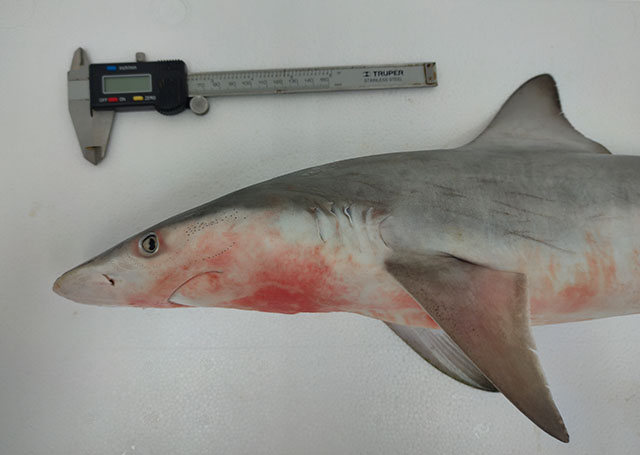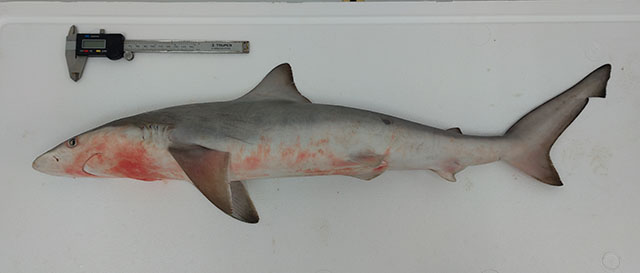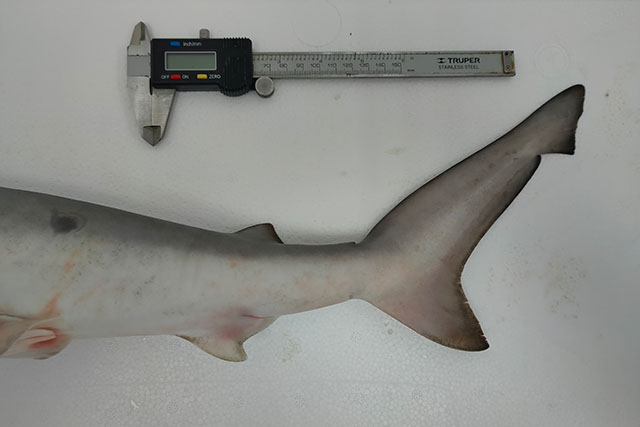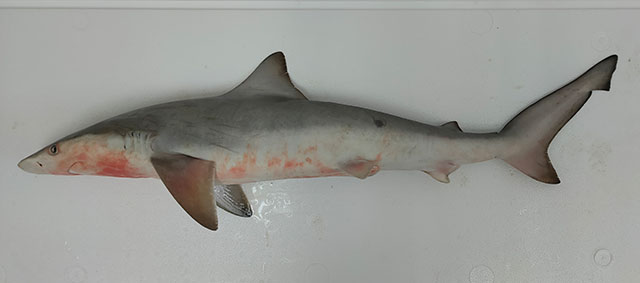Carcharhinus cerdale Gilbert, 1898
Description
This smooth-backed species is distinguished by the following: some specimens have a very weak interdorsal ridge (evident in embryos and neonates; not noticeable in the holotype or on a 103.4-cm male individual); first dorsal fin originates about the middle of the pectoral fin inner margin; its anterior margin is much longer than the distance from the apex to the free rear tip; height of first dorsal fin is about 9-10.5% of TL; second dorsal fin originates over or behind middle of anal base; caudal fin measures about one-fourth of the total length; has minute, inconspicuous hyomandibular pores behind the eye; upper teeth, from the first to the fifth tooth have broadly triangular, increasingly oblique cusps with serrated edges, with a notch on both edges at about a third of length from the base to the cusp (serrations from the notch to the base are much larger than those on the rest of the cusp); lower teeth have narrow, erect to slightly oblique, triangular cusps with more finely serrated edges; teeth number U:13 to 15-1 or 2-13 to 15, L:12 to 15-0 to 2-12 to 15; denticles roughly oblong and have minimal overlapping, with three central ridges, the central ridge being only slightly longer than the side ridges and terminating in a slightly longer point. Colour in preserved specimens: the first and second dorsal fins, the pelvic fins and the anal fin had dark or dusky edges, and the pectoral fins usually had dusky or black tips on their dorsal sides, and the lower caudal lobe was dusky or blacktipped; neonates have caudal fins with a black border, and their pectoral fins have a wide, white rear margin (Ref. 86285).
Common Names
Taxonomic Hierarchy
Kingdom: Animalia
Phylum: Chordata
Class: Elasmobranchii
Order: Carcharhiniformes
Family: Carcharhinidae
Genus: Carcharhinus
Species: Carcharhinus cerdale Gilbert, 1898
Climate Zone
Location
Biology
Life cycle and mating behavior
Habitat
demersal



